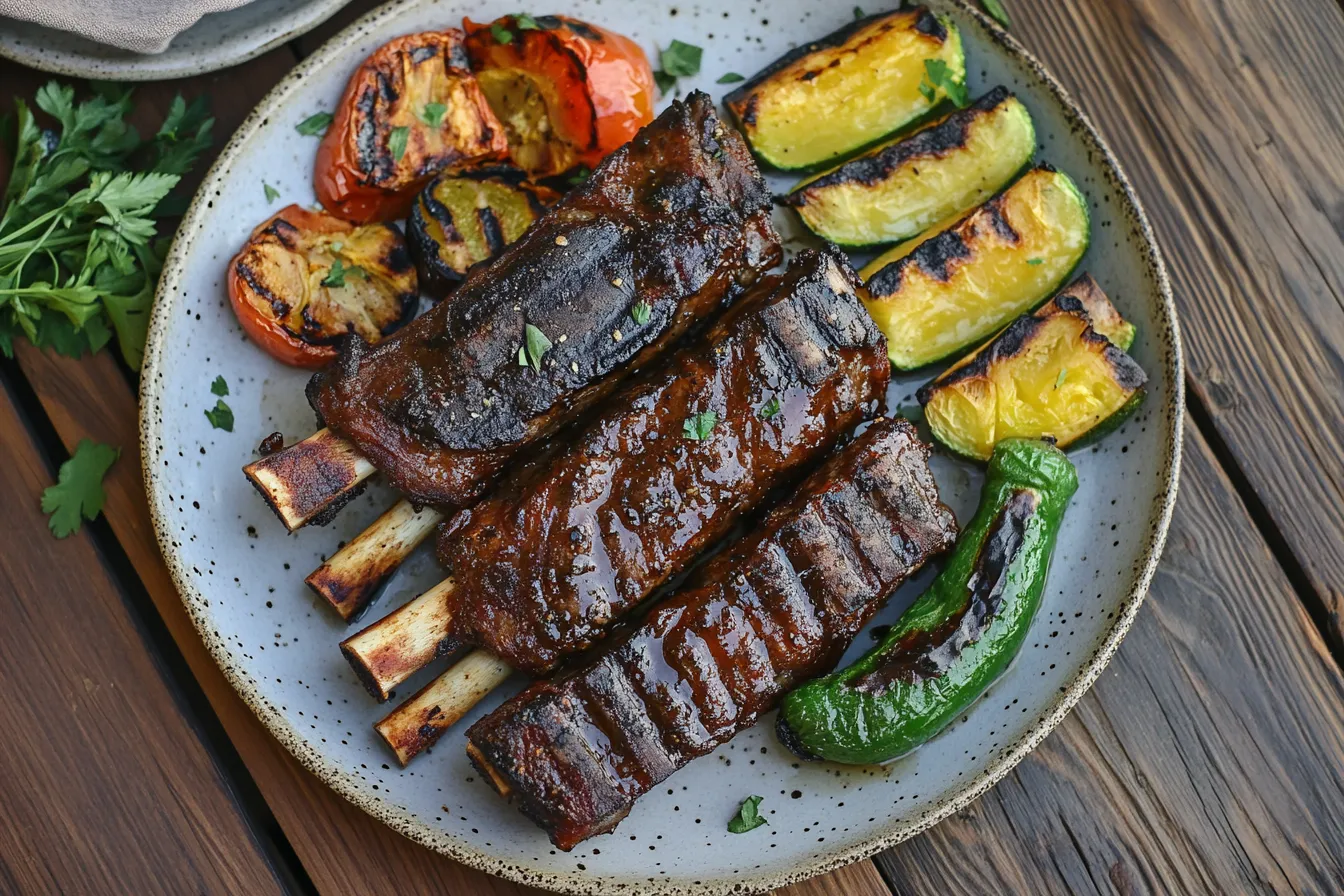Have you ever craved a dinner experience so comforting and indulgent that it feels like a warm embrace on a chilly evening? Short ribs might just be the answer you’ve been looking for. Whether you’re a seasoned home cook or just stepping into the kitchen, these tender, flavorful cuts of beef offer a culinary solution to elevate any meal. Imagine the satisfaction of serving a dish that’s not only hearty and satisfying but also surprisingly simple to prepare. If you’re ready to turn everyday ingredients into a gourmet masterpiece, you’re in for a treat!
List Of Contents
Introduction to Short Ribs
Short ribs are a cut of beef taken from the brisket, chuck, plate, or rib sections. These ribs are prized for their rich, meaty flavor and versatility in cooking. Unlike spare ribs or baby back ribs, short ribs are thick and contain both meat and connective tissue, making them ideal for slow cooking methods such as braising and barbecuing.
Short ribs are commonly used in various cuisines, from hearty American barbecue to delicate Korean dishes like galbi. However, their dense texture and unique flavor profile require careful preparation to ensure they cook evenly and develop their best taste and tenderness. Check out more recipes here.
Importance of Preparing Short Ribs
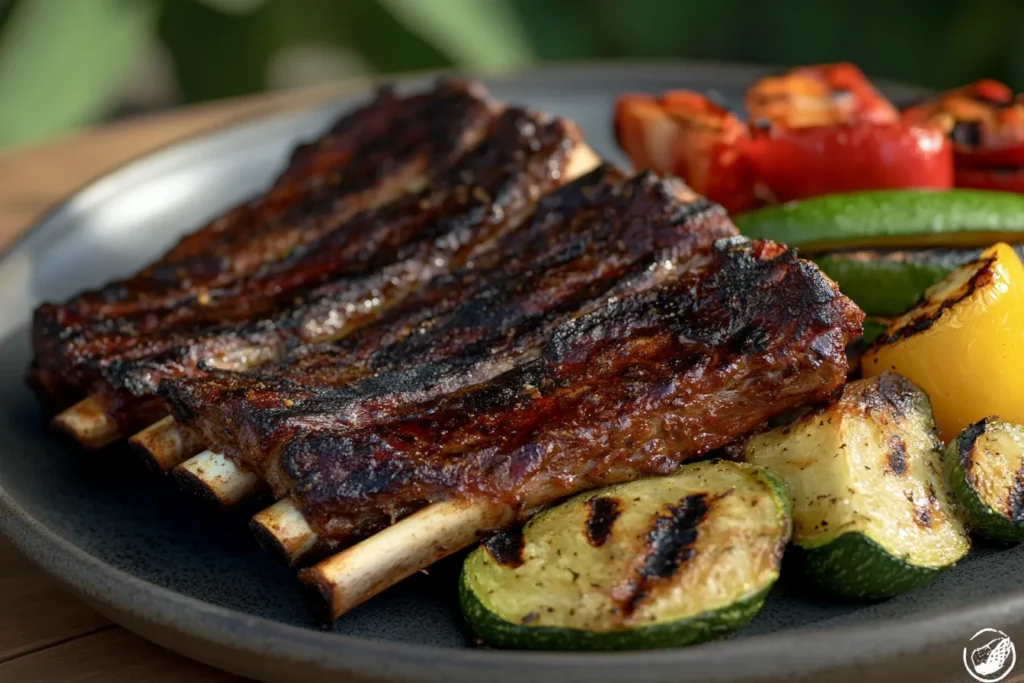
The preparation process plays a crucial role in unlocking the full potential of short ribs. Without proper preparation, short ribs may retain impurities, cook unevenly, or end up too tough to enjoy. The preparation helps:
- Tenderize the meat for easier cooking.
- Enhance flavor through marinades or soaking solutions.
- Remove unwanted elements, such as excess blood or gamy flavors.
By dedicating time to preparation, you set the stage for a dish that’s both flavorful and texturally satisfying. Check out more recipes here.
What Does Soaking Mean?
Soaking is a preparation method where the meat is submerged in a liquid, such as water, brine, or marinade, before cooking. This process is different from other techniques like marinading, which focuses on flavor infusion, or boiling, which partially cooks the meat. Check out more recipes here.
The soaking process serves specific purposes:
- Drawing out impurities, including blood or small bone fragments.
- Preparing the meat for slow cooking by softening the fibers.
- Creating a neutral base that absorbs flavors better during cooking.
Traditional Methods of Preparing Short Ribs
Historically, short ribs have been prepared using various techniques:
- Boiling: Often used in soups or stews to extract flavors and soften the meat.
- Braising: A method where the ribs are seared and then cooked in liquid for several hours.
- Marinading: Adds flavor but doesn’t necessarily address texture or impurities.
Soaking is a preparatory step that complements these techniques, ensuring the meat is clean and ready to absorb flavors during cooking. Check out more recipes here.
Why Do People Soak Short Ribs?
Soaking short ribs is a practice rooted in tradition and science. Here are the most common reasons:
- Flavor Enhancement: Soaking can neutralize overly strong or gamy flavors, making the ribs more palatable.
- Blood Removal: Certain cultural and religious practices prioritize soaking to remove blood from the meat for purity.
- Tenderizing: By softening the meat’s fibers, soaking prepares short ribs for cooking methods like grilling or braising.
Types of Soaking Solutions
Depending on the desired outcome, different soaking solutions are used:
- Water: A neutral option for drawing out impurities.
- Saltwater Brines: Enhance flavor while tenderizing the meat.
- Vinegar Mixes: Add acidity, which can break down tougher proteins.
- Wine Soaks: Impart a complex flavor profile, often used in French or Italian cuisines.
Each solution serves a specific purpose, making it essential to match the solution to your cooking goals. Check out more recipes here.
The Science Behind Soaking
From a scientific perspective, soaking affects the structure and composition of meat. Liquids penetrate the meat’s fibers, dissolving some of the connective tissue and fat. This process also helps to:
- Soften collagen, making the meat easier to chew.
- Reduce surface tension, allowing marinades to be absorbed more efficiently.
- Neutralize strong flavors caused by myoglobin or excess fat.
Soaking vs. Not Soaking
Choosing whether to soak short ribs often comes down to personal preference and the intended cooking method. Here are some key differences:
- Texture: Soaked ribs are generally softer and more uniform in texture.
- Taste: Soaking can balance flavors, especially if the meat has a strong, gamy profile.
- Cooking Results: Unsoaked ribs may require additional seasoning or tenderizing steps during cooking.
For chefs and home cooks, the decision often hinges on the desired flavor profile and texture.
Cultural Perspectives on Soaking
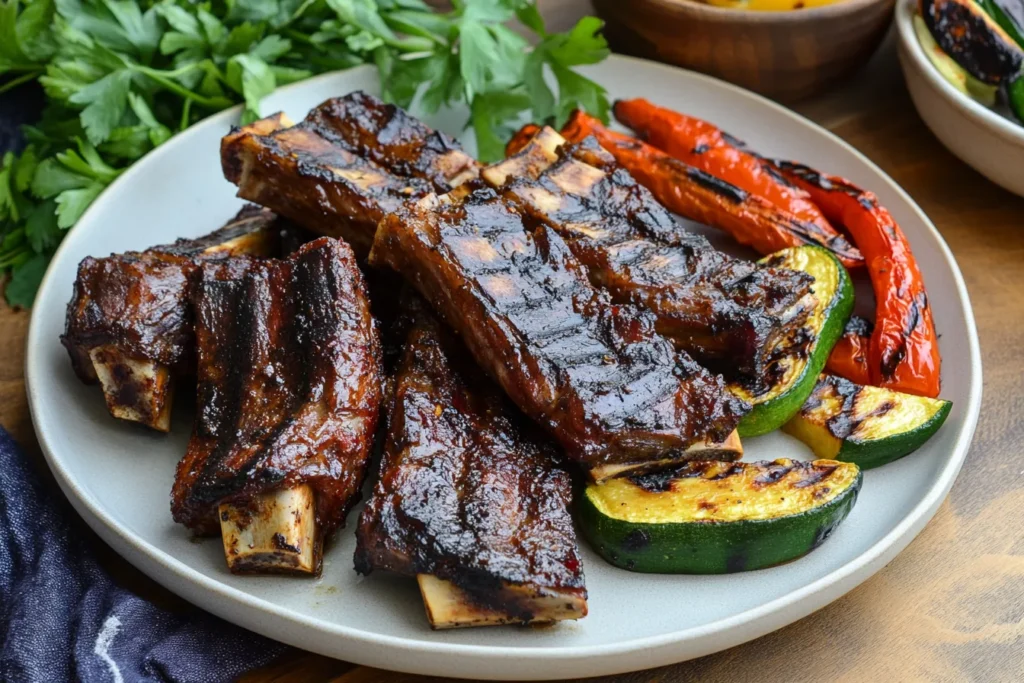
The practice of soaking short ribs varies across cultures:
- In Korean cuisine, soaking short ribs for galbi or soups removes blood and impurities, ensuring a clean and delicate taste.
- Western cuisines may favor brining to add flavor and tenderize the meat.
- In some Middle Eastern traditions, soaking aligns with dietary laws requiring blood removal from meat.
This diversity highlights how soaking reflects both culinary and cultural priorities.
Overview of Short Rib Cuts
Short ribs are typically divided into two main categories:
- Plate Ribs: Large, meaty ribs often used in barbecue. These benefit significantly from soaking due to their density.
- Chuck Ribs: Smaller and more uniform, ideal for stews or braising. Soaking can still improve texture and flavor absorption.
Understanding the cut helps in tailoring the soaking process to get the best results.
Detailed Process and Benefits
The Steps to Soaking Short Ribs
Soaking short ribs involves a straightforward process but requires attention to detail to achieve the best results. Follow these steps:
- Prepare the Ribs:
- Trim excess fat, if desired, but leave enough to retain moisture.
- Rinse the ribs under cold water to remove surface debris.
- Choose the Right Soaking Solution:
- Water for neutral soaking.
- Brine for added flavor.
- Acidic solutions like vinegar for tenderizing tough meat.
- Wine or aromatics for flavor complexity.
- Submerge the Ribs:
- Place the ribs in a large container and fully submerge them in the solution.
- Use a weight, if needed, to keep the ribs completely underwater.
- Soak for the Right Duration:
- Short soaks (30 minutes to 1 hour) remove surface impurities.
- Overnight soaking allows deeper penetration and tenderization.
- Rinse and Pat Dry:
- After soaking, rinse the ribs under cold water to remove residual solution.
- Pat dry with a paper towel before seasoning or cooking.
Benefits of Soaking
Soaking short ribs offers multiple benefits that enhance the final dish:
- Improved Tenderness: Soaking softens connective tissues, ensuring a melt-in-your-mouth texture after cooking.
- Reduced Blood and Impurities: Helps eliminate surface blood and bone fragments, resulting in a cleaner flavor.
- Enhanced Flavor Absorption: A pre-soaked rib is more receptive to marinades and seasonings, enriching its taste.
These advantages make soaking a vital step, particularly for slow-cooked or grilled short ribs.
Tenderizing Short Ribs Through Soaking
Tenderizing is one of the primary goals of soaking. Here’s how soaking achieves it:
- Breaking Down Collagen: Collagen in short ribs softens when exposed to liquid, making the ribs less chewy.
- Hydrating Meat Fibers: Water or brine penetrates the meat, making it juicier and less prone to drying out during cooking.
- Reducing Toughness: Acids in solutions like vinegar further break down muscle fibers for a tender bite.
Removing Blood from Short Ribs
In certain religious and cultural practices, removing blood from meat is essential. Soaking facilitates this process by:
- Drawing blood to the surface, which is then rinsed away.
- Allowing compliance with dietary laws in kosher or halal cooking.
- Enhancing the visual appeal and purity of the dish.
For those adhering to such practices, soaking is both a culinary and spiritual step.
Balancing Flavor Profiles
Soaking short ribs can neutralize unwanted flavors, particularly in wild or heavily aged meat. It balances:
- Gaminess: Reducing the strong, earthy taste often found in certain cuts.
- Metallic Notes: Caused by residual blood or iron-rich myoglobin.
Soaking creates a clean slate, allowing chefs to build flavors through seasoning and cooking techniques.
Mistakes to Avoid While Soaking
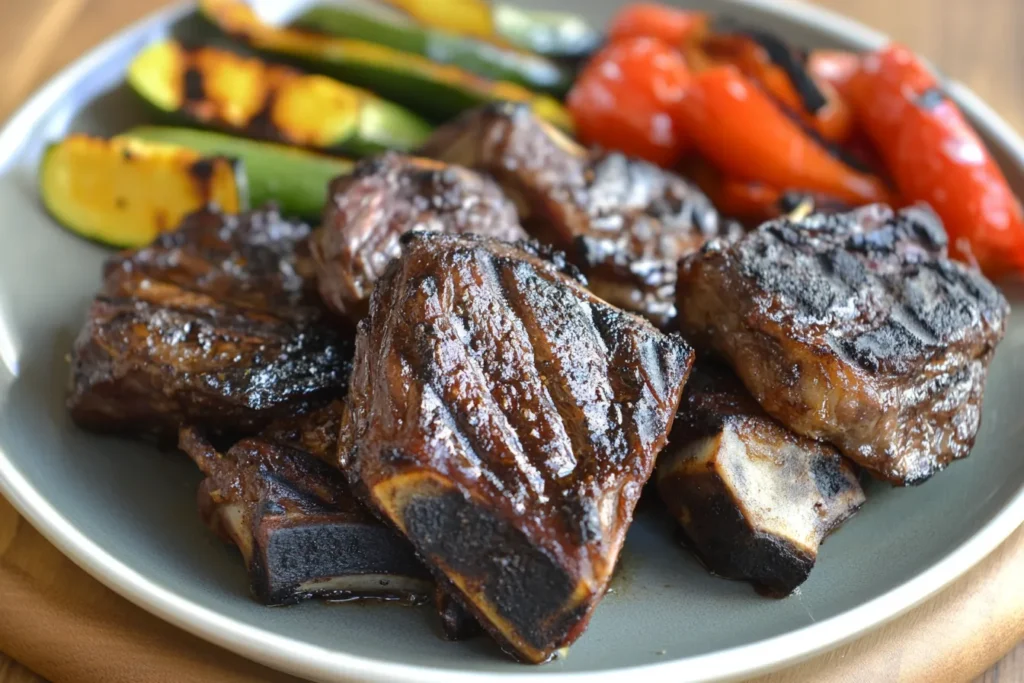
To maximize the benefits of soaking, avoid these common pitfalls:
- Over-Soaking: Prolonged soaking can lead to a waterlogged texture and loss of natural flavors.
- Incorrect Temperature: Soaking in hot water can partially cook the meat, altering its texture and safety.
- Over-Salting the Brine: Excess salt can make the ribs too salty, overpowering the dish.
Adhering to best practices ensures that soaking enhances rather than detracts from the short ribs’ quality.
Optimal Duration for Soaking
The ideal soaking time depends on your goals:
- Quick Soak (30-60 minutes): Removes surface blood and impurities, suitable for grilling or quick cooking.
- Overnight Soak (8-12 hours): Maximizes tenderization and flavor absorption, ideal for slow cooking or braising.
Choose the duration based on your cooking method and desired outcome.
Influence of Soaking Ingredients
The choice of soaking ingredients can dramatically impact the final dish:
- Salt: Helps tenderize and enhances natural beefy flavors.
- Vinegar or Citrus: Breaks down proteins for extra tenderness.
- Wine or Beer: Adds a sophisticated flavor profile, perfect for European-inspired recipes.
- Herbs and Spices: Infuse subtle aromatics into the meat.
Experimenting with different solutions allows you to tailor the taste and texture of your ribs.
Cooking Methods After Soaking
After soaking, short ribs can be prepared using various methods, each complementing the effects of soaking:
- Grilling: The soaked ribs stay moist and tender while developing a smoky char.
- Braising: Combines the softness from soaking with rich, savory liquids for a comforting dish.
- Smoking: Soaked ribs retain moisture during the lengthy smoking process, resulting in a juicy final product.
Each method builds on the foundation laid by soaking, delivering a dish with exceptional flavor and texture.
Preserving Nutrients During Soaking
While soaking offers many benefits, it can also lead to some nutrient loss. To minimize this:
- Use soaking liquids that you can incorporate into cooking, such as brine or wine.
- Avoid soaking for excessively long periods.
- Maintain optimal water-to-salt ratios to prevent nutrient leaching.
These strategies help retain the nutritional value of your short ribs while still reaping the benefits of soaking.
Variations and Advanced Techniques
Soaking for Korean Short Ribs (Galbi)
In Korean cuisine, soaking is a critical step in preparing galbi—marinated and grilled short ribs. The process is tailored to achieve the clean, balanced flavors central to Korean barbecue. Here’s how it works:
- Removing Impurities: Korean short ribs are soaked in water to remove excess blood, which ensures a lighter, cleaner taste.
- Prepping for Marinade: By neutralizing strong flavors through soaking, the ribs absorb the sweet and savory galbi marinade more effectively.
- Enhancing Texture: Soaking softens the dense muscle fibers, making the ribs tender and easier to grill.
The result is a dish that perfectly balances the smoky, charred exterior with a juicy, flavorful interior—a hallmark of Korean barbecue.
Comparing Soaking Methods Across Cuisines
Different culinary traditions approach soaking with their own techniques and goals:
- Korean Cuisine: Focuses on blood removal and preparation for marinades.
- American Barbecue: Uses brines for flavor infusion and moisture retention before slow smoking.
- French Cooking: Incorporates wine or aromatic liquids for both flavor and tenderizing effects.
Each method reflects the cultural priorities and flavor profiles of its cuisine, offering unique ways to elevate short ribs.
The Role of Seasonings in Soaking Liquids
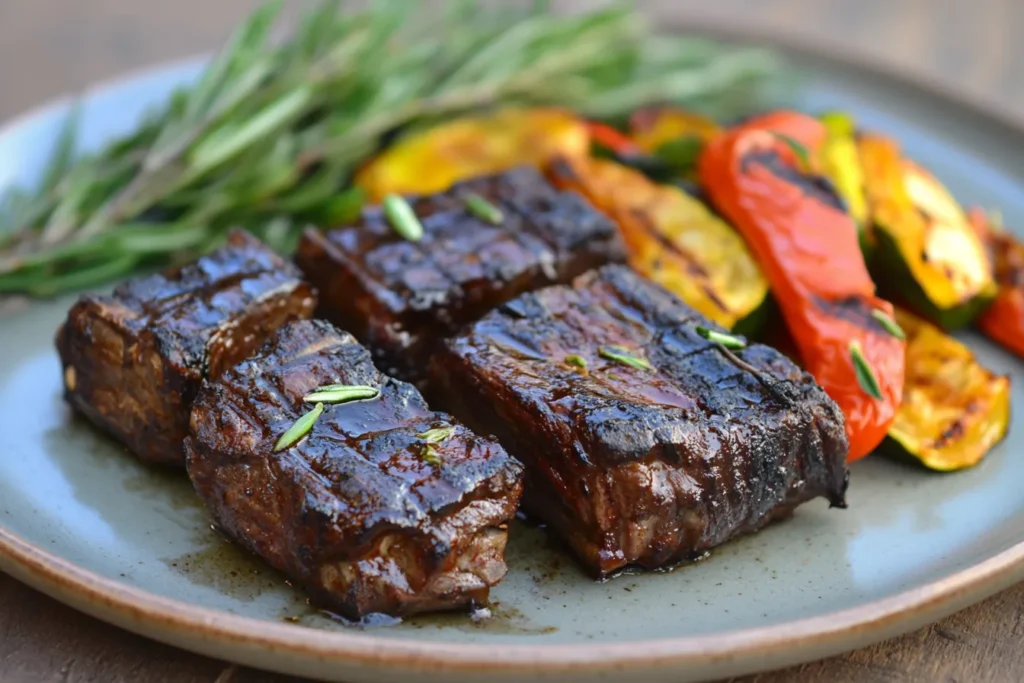
Adding seasonings to soaking liquids can take short ribs to the next level. Common additions include:
- Herbs: Rosemary, thyme, and bay leaves lend earthy notes.
- Spices: Crushed black peppercorns, cloves, or cinnamon add warmth and complexity.
- Aromatics: Garlic, onion, and ginger infuse subtle layers of flavor.
- Citrus Zest: Lemon or orange zest adds a bright, tangy element.
Seasoned soaking liquids allow the ribs to absorb flavors at the molecular level, creating a more nuanced and memorable dish.
Brining vs. Soaking
While soaking and brining are similar, they serve distinct purposes:
- Soaking: Focuses on cleansing and mild tenderizing. Best for neutralizing unwanted flavors.
- Brining: Uses salt and sugar to enhance moisture retention and flavor.
For instance, brining is ideal for grilling short ribs, while soaking is often preferred for recipes that emphasize purity and delicacy, like soups or stews.
Soaking for Slow Cooking Recipes
Soaking is especially beneficial for slow cooking methods such as braising or stewing:
- Removes Impurities: Creates a cleaner base for slow-cooked dishes.
- Prepares the Ribs for Long Cooking Times: Softens connective tissues, reducing the time required to achieve tenderness.
- Balances Flavors: Ensures that the meat absorbs the cooking liquid’s flavors more evenly.
Popular dishes like braised short ribs in red wine benefit immensely from pre-soaking, as the preparation ensures a rich, cohesive flavor throughout the dish.
Advanced Techniques: Vacuum Soaking
For those looking to modernize their soaking approach, vacuum sealing offers significant advantages:
- Faster Penetration: Removing air allows the liquid to penetrate meat fibers more quickly.
- Uniform Absorption: Ensures that all parts of the rib are equally soaked.
- Efficiency: Reduces soaking time without compromising results.
Vacuum soaking, often done using sous vide machines, is ideal for professional kitchens or serious home cooks looking to streamline their preparation process.
Soaking in Alcohol-Based Solutions
Alcohol-based solutions like red wine or beer are excellent for soaking short ribs. They contribute to both flavor and texture:
- Tenderizing Effect: The mild acidity in wine or beer breaks down proteins, softening the meat.
- Flavor Depth: Alcohol enhances natural beef flavors and adds complexity, pairing well with rich sauces or stews.
For example, soaking short ribs in red wine before braising creates a luxurious dish perfect for special occasions.
Soaking for Dietary Preferences
Adjustments can be made to soaking techniques to accommodate various dietary needs:
- Low-Sodium Diets: Use unsalted water or mild acidic solutions like diluted lemon juice.
- Non-Alcoholic Options: Substitute wine or beer with fruit juice or broth for a similar tenderizing effect.
- Herb-Forward Alternatives: Emphasize fresh herbs and aromatics to infuse flavor without added sodium or sugar.
These adaptations ensure that everyone can enjoy the benefits of soaked short ribs without compromising their dietary restrictions.
Environmental and Ethical Considerations
Modern cooks are increasingly mindful of environmental impacts and ethical practices in the kitchen. Here’s how to make soaking more sustainable:
- Reuse Soaking Liquids: Repurpose brines or seasoned water in cooking to reduce waste.
- Minimize Water Use: Soak ribs in a tightly fitting container to limit excess water.
- Opt for Local Ingredients: Use fresh, locally sourced herbs and seasonings to lower your carbon footprint.
Sustainability in the kitchen not only benefits the environment but also enhances the overall cooking experience.
Combining Soaking with Other Preparations
Soaking doesn’t need to stand alone—it can be paired with other techniques for even better results:
- Dry Rubs: Apply a spice rub after soaking to add a flavorful crust.
- Resting Times: Let the ribs rest after soaking to allow the liquid to distribute evenly.
- Layered Marinades: Follow soaking with a marinade to build complex flavors.
These combined methods amplify the impact of soaking, creating a dish that is flavorful, tender, and beautifully balanced.
FAQs
- How long should I soak short ribs?
- Typically, soak for 30 minutes to 12 hours, depending on your goals.
- What happens if I soak ribs too long?
- Over-soaking can dilute the natural flavors and create a mushy texture.
- Can I soak ribs in milk?
- Yes, milk is sometimes used for its mild tenderizing and flavor-balancing properties.
- Do I have to soak all short ribs?
- Not necessarily, but soaking is especially beneficial for removing impurities and tenderizing tougher cuts.
- Is brining better than soaking?
- It depends on your recipe. Brining adds flavor, while soaking focuses on purification.
- What’s the best liquid for soaking?
- Water for cleansing, brine for flavor, and wine for tenderness and complexity.
- Can I use soaking liquid for cooking?
- Yes, seasoned soaking liquids can be repurposed in stews or braising.
- Does soaking impact nutrient content?
- Prolonged soaking may lead to minor nutrient loss, but using the soaking liquid mitigates this.
- Is soaking necessary for grilling?
- While not required, soaking can help maintain moisture and balance flavors for grilled ribs.
- Can I skip soaking if I’m in a hurry?
- Yes, but you may need to adjust cooking methods to account for impurities or tougher textures.
